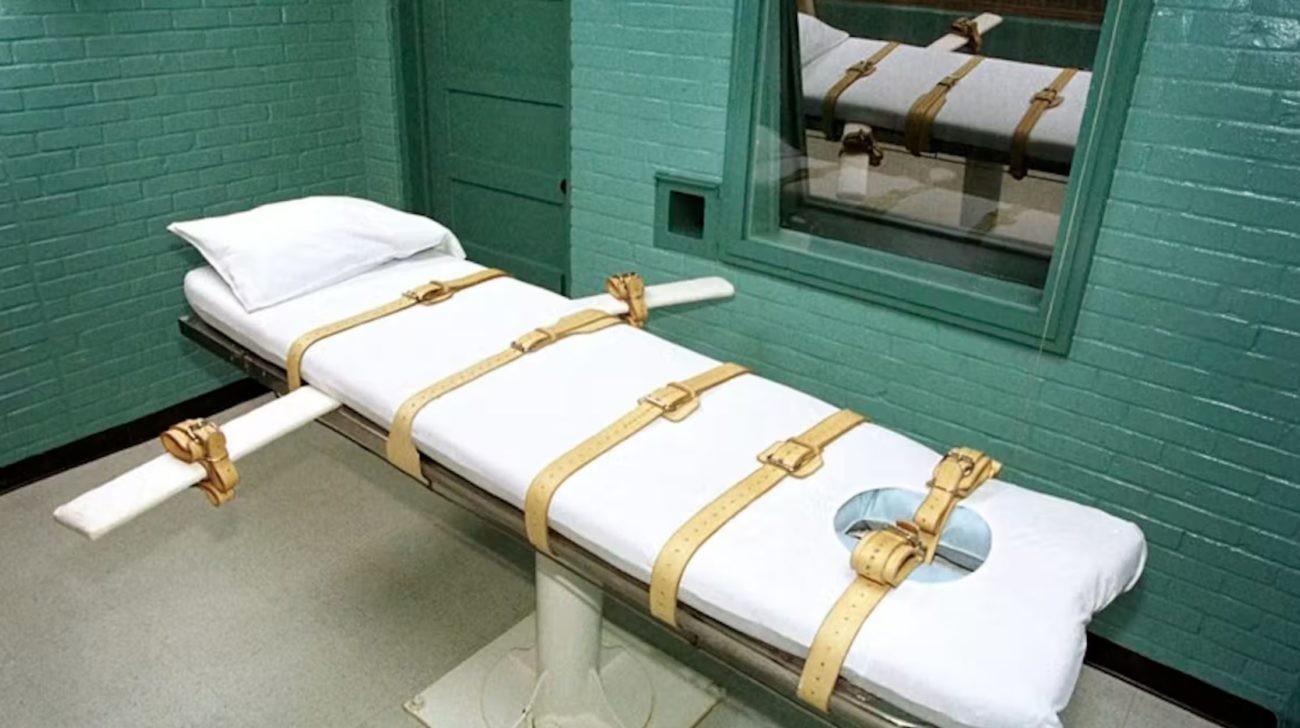A Dallas man set to be executed on Wednesday for the murder of Dallas-area realtor Sarah Walker, 40, inside a McKinney model home in 2006 is again asking to be spared.
Kosoul Chanthakoummane, 41, has already successfully halted his execution twice, citing questionable forensic practices that helped send him to death row.
On July 8, 2006, Walker’s body was discovered by a couple visiting a model home in the Craig Ranch subdivision in McKinney. She had been stabbed 33 times, suffered a broken nose and fractured teeth, and had a bite mark on the back of her neck, which would later prove critical at the trial.
At the time of the murder, Chanthakoummane was a 25-year-old delivery driver living with relatives in Dallas. He had recently been paroled from a North Carolina prison after serving seven years of an 11-year sentence for aggravated kidnapping and aggravated robbery.
Evidence used to secure the murder conviction included DNA “consistent with Chanthakoummane’s” that was recovered from under Walker’s fingernails, window pull cords, the deadbolt lock, and swabs throughout the house.
Scratches and other wounds on the hands and arms of Chanthakoummane at the time of his arrest were also used as evidence, court records show. And during police questioning, Chanthakoummane admitted to being in the model home the day of the murder.
Additionally, during the opening statement at trial, Chanthakoummane’s lawyers conceded that he stabbed Walker in what was supposed to be a robbery but went wrong. However, the confession went against Chanthakoummane’s wishes, according to a sworn affidavit.
After an eight-day trial, a jury convicted him after only 30 minutes of deliberation. They heard testimony about the DNA evidence and watched a police video in which Chanthakoummane repeatedly changed his story during the two-hour interview after his arrest.
Jurors also decided his fate, giving him the death penalty over life in prison.
Chanthakoummane has steadfastly maintained his innocence, claiming his conviction 15 years ago was based partly on flawed and outdated evidence, including the use of long-debunked bite mark evidence and the hypnosis of witnesses.
Forensic dentistry consultant Brent Hutson was brought in to examine the bite mark on Walker’s neck before the trial. He made a mold of the mark and Chanthakoummane’s teeth and compared them using Adobe Photoshop.
Ultimately, Hutson was “unable to exclude [Chanthakoummane] from that population of individuals that could have inflicted this injury,” according to court documents.
Since the investigation, bite mark evidence has been entirely discredited. A 2016 report from the White House deemed it an invalid forensic practice, and the Texas Forensic Science Commission issued a moratorium on its use that same year.
In addition to debunked bite mark analysis, police were led to Chanthakoummane, who is of Laotian descent, after two witnesses testified to seeing a “man of Asian descent” walking toward the model home before Walker arrived that day.
Both witnesses underwent hypnosis, led by Texas Ranger Richard Shing, before meeting with a sketch artist. They were instructed to picture and manipulate memories in their “mind’s eye” to imagine the person they saw from new angles.
Police arrested Chanthakoummane following the release of the sketch based on the hypnotized witnesses’ recollections, nearly two months after the murder.
Chanthakoummane’s attorneys called forensic hypnosis a “junk science,” suggesting it incorrectly treats human memories like files that can be zoomed in on and refocused, which could result in false or misleading testimony.
The Texas Rangers were long-known for using forensic hypnosis to elicit confessions or evidence from suspects until they suspended the practice in 2021.
Chanthakoummane was last scheduled to be executed in July 2017. Then, the Court of Criminal Appeals halted the execution and sent his case back to the Collin County trial court to review the questionable forensic evidence used to convict him in 2007.
The trial court held a hearing on the issues raised by Chanthakoummane and denied all of his claims.
The state, however, agreed to conduct additional DNA testing on two exhibits that had not previously been tested. After the additional testing, a state judge concluded that the results, if used at the trial, would likely not have changed the outcome, according to court records.
“The linchpin of the State’s case was the DNA evidence found at the scene and under Walker’s fingernails,” the appellate judges wrote in the opinion.
Chanthakoummane’s team attempted to appeal to the U.S. Supreme Court multiple times, but the court denied the petitions.
Death Penalty Action, a nonprofit group that opposes capital punishment, recently held a news conference about the case, highlighting its concerns. The group played a video produced by the Knights of Columbus, a Catholic organization, about how the victim’s father, a devout Catholic, had forgiven Chanthakoummane and opposed his execution.
“We are not prepared to say today that Kosoul is innocent. But we are here to say, there’s some real questions,” said Abraham Bonowitz, executive director of Death Penalty Action, during an August 3 news conference.
Bonowitz claimed Chanthakoummane’s DNA was not found in the bite mark on Walker’s neck. He also said his organization had filed a clemency petition with the Texas Board of Pardons and Paroles on behalf of Chanthakoummane, seeking a stay of execution.
The petition claimed Texas has a history of wrongful convictions.
“With a punishment so severe as the death penalty, there can be no room for error. We are not convinced that the state of Texas got it right in this case. We urge you to recommend clemency or a reprieve in order to allow a more thorough review of the concerns raised in this letter,” the petition read.







What has taken so long?
It’s time for justice
I lived 2 buildings over from where this happened. Sarah was a young mother and beloved member of the real estate community. It is too bad that our tax dollars paid to house this animal for so long. This is long overdue.
30 minutes for the original jury to decide. Sounds about right; time for a leisurely cup of coffee (or two) while filling out the paperwork.
Skin under her fingernails? How do the nay sayers exclude that? Bite marks no match? What happens if the victim is moving so that the assailant’s teeth cannot fully enter the skin?